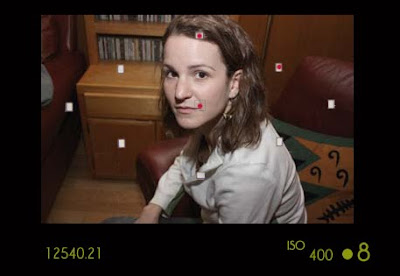Framing your Shot with canon eos 500D
Monday, September 14, 2009
Framing Your Shot
This next part you probably already know: look through the viewfinder and frame
your shot. If you have a zoom lens attached to your camera, you can zoom to
frame tighter or wider. For now, we’re not going to worry about composition,
because we’ll be discussing that in detail later.
Autofocus, or “How to Press the Shutter Button”
With your shot framed with canon eos 500d, you’re ready to shoot. However, although pressing the
shutter button may seem a simple thing, there are some important things to understand
about it, because it’s your key to the camera’s auto focus feature.
Once you’ve framed the shot, press the shutter button halfway. When you do this,
the Canon 500D will analyze your scene and try to determine what the subject is.
The camera can analyze nine focus points. Once the T1i has determined the
subject (or what it thinks is the subject), it will light up the focus point that it
thinks is correct. If more than one point sits on the plane of focus, it will light
up them all.

When you half-press the shutter button to autofocus, the XS will light up the focus
spots that it thinks are correct for your subject.
Very often, several potential subjects sit on the same plane (that is, they’re all the
same distance from the camera). The T1i will show you all the focus points that it
considers in focus. As long as one of them is on your subject, then it has focused
correctly.
When the T1i has achieved focus, it will beep and show a green circle on the right
side of the viewfinder status display. (You can see this in the previous figure.)
This half-press of the shutter is a crucial step when using the T1i (or any other
autofocus camera). If you wait until the moment you want to take the shot and
then press the shutter button all the way down, you’ll miss the shot, because the
camera will have to focus, meter, and calculate white balance before it can fire,
and these things take time.
WA R N I N G : Don’t Zoom After Locking Focus
Once the camera has locked focus, don’t adjust the zoom control. Focusing
at a specific distance is a function of your current focal length. If you change
focal length (that is, if you zoom in or out), you’ll throw your image out of
focus.
r e m in d e r : “My flash popped up!”
In Full Auto mode, the T1i will decide whether it needs to use the flash. If it
decides that it needs it, the flash will automatically pop up and will be fired
when you take the shot.









[get this widget]
This next part you probably already know: look through the viewfinder and frame
your shot. If you have a zoom lens attached to your camera, you can zoom to
frame tighter or wider. For now, we’re not going to worry about composition,
because we’ll be discussing that in detail later.
Autofocus, or “How to Press the Shutter Button”
With your shot framed with canon eos 500d, you’re ready to shoot. However, although pressing the
shutter button may seem a simple thing, there are some important things to understand
about it, because it’s your key to the camera’s auto focus feature.
Once you’ve framed the shot, press the shutter button halfway. When you do this,
the Canon 500D will analyze your scene and try to determine what the subject is.
The camera can analyze nine focus points. Once the T1i has determined the
subject (or what it thinks is the subject), it will light up the focus point that it
thinks is correct. If more than one point sits on the plane of focus, it will light
up them all.

When you half-press the shutter button to autofocus, the XS will light up the focus
spots that it thinks are correct for your subject.
Very often, several potential subjects sit on the same plane (that is, they’re all the
same distance from the camera). The T1i will show you all the focus points that it
considers in focus. As long as one of them is on your subject, then it has focused
correctly.
When the T1i has achieved focus, it will beep and show a green circle on the right
side of the viewfinder status display. (You can see this in the previous figure.)
This half-press of the shutter is a crucial step when using the T1i (or any other
autofocus camera). If you wait until the moment you want to take the shot and
then press the shutter button all the way down, you’ll miss the shot, because the
camera will have to focus, meter, and calculate white balance before it can fire,
and these things take time.
WA R N I N G : Don’t Zoom After Locking Focus
Once the camera has locked focus, don’t adjust the zoom control. Focusing
at a specific distance is a function of your current focal length. If you change
focal length (that is, if you zoom in or out), you’ll throw your image out of
focus.
r e m in d e r : “My flash popped up!”
In Full Auto mode, the T1i will decide whether it needs to use the flash. If it
decides that it needs it, the flash will automatically pop up and will be fired
when you take the shot.









[get this widget]
0 Comments:
Powered by Blogger Tutorials




